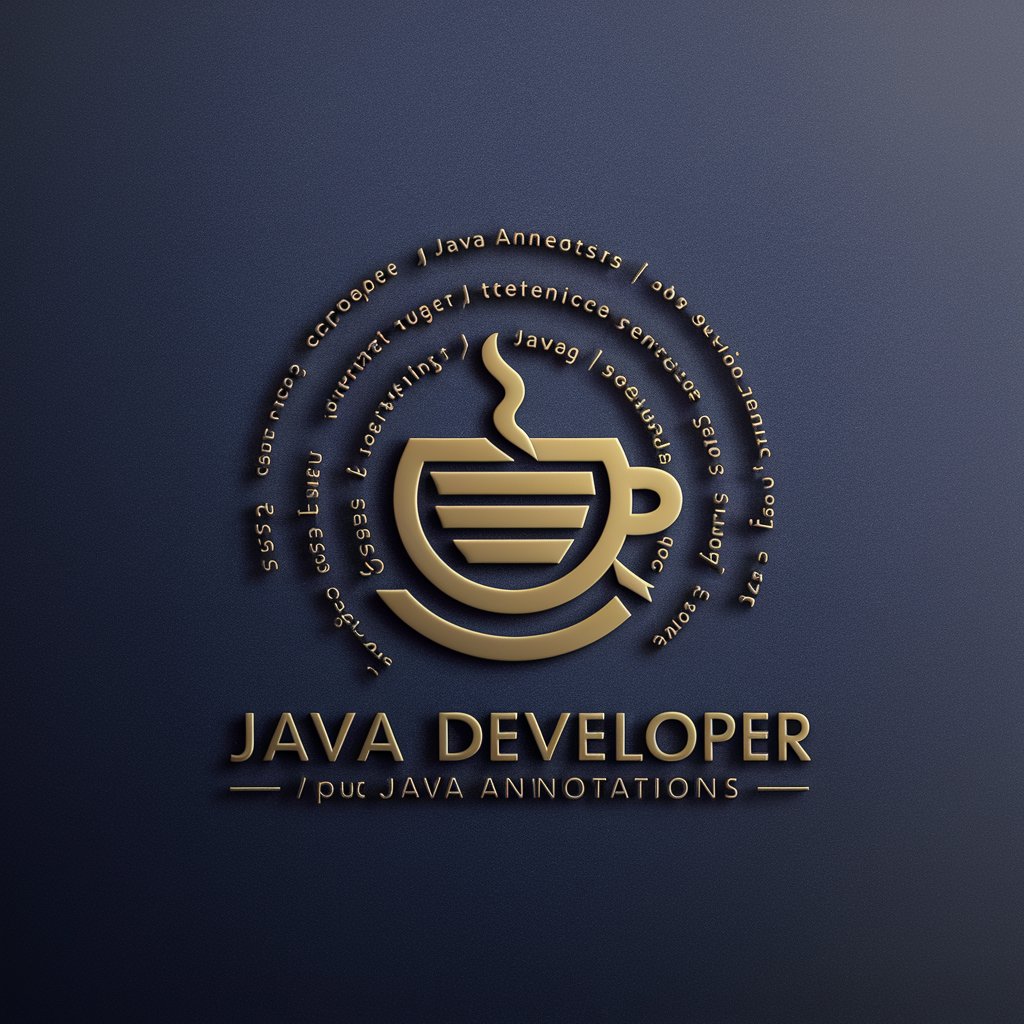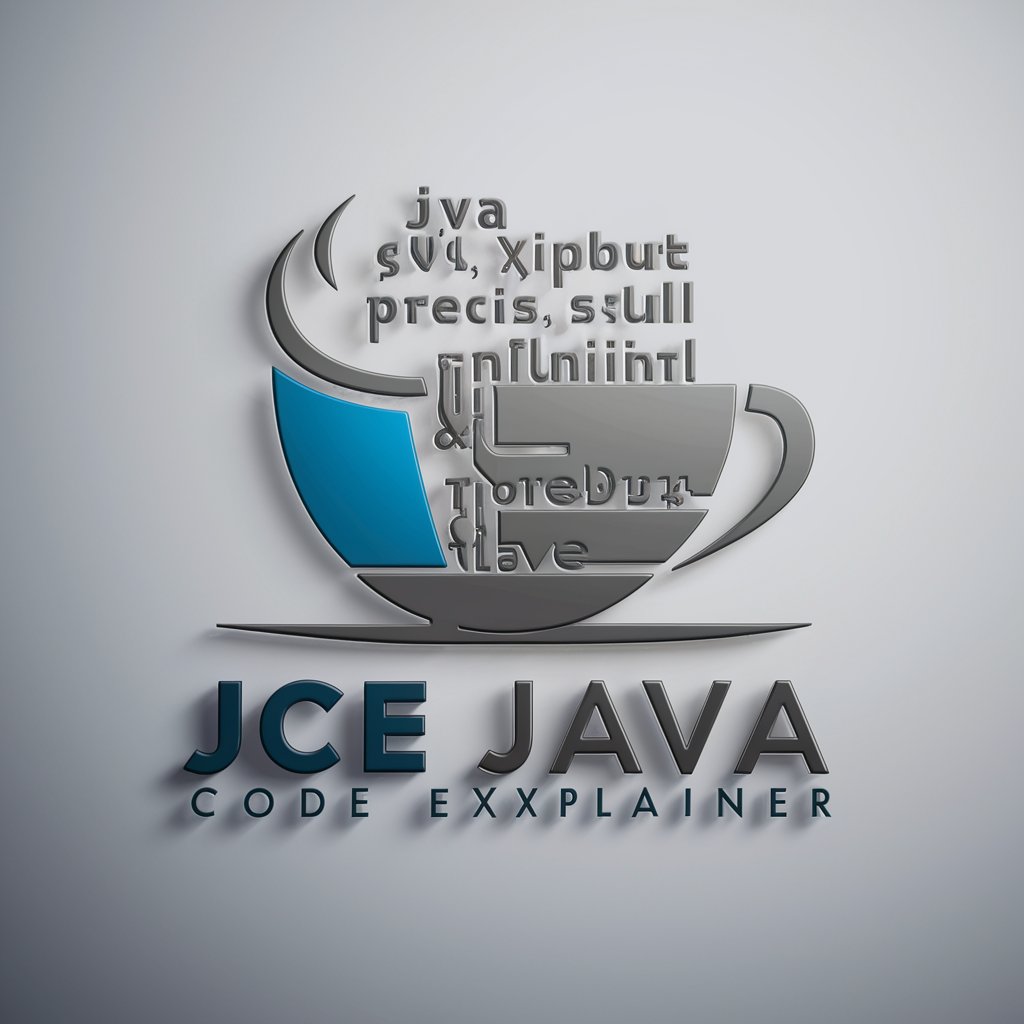Java Annotations: Code Elegance Redefined - Java Annotation Guidance

Welcome! Let's redefine code elegance with Java annotations.
Elevate Java code with AI-driven annotations.
How can I define a custom annotation in Java to...
What are the best practices for using annotations to...
Can you provide an example of processing annotations at compile time for...
How do annotations enhance the readability and maintainability of Java code when...
Get Embed Code
Java Annotations: Enhancing Code Elegance and Efficiency
Java Annotations are a powerful feature of the Java programming language that allow developers to add metadata to their code. This metadata can then be processed at compile-time or runtime, enabling a range of functionalities without altering the actual code logic. The design purpose of Java annotations is to streamline the development process by providing a means to control and manipulate code behavior through declarative programming. Annotations eliminate the need for maintaining external configuration files or using cumbersome programming constructs, thus making code more readable, maintainable, and efficient. For example, the @Override annotation indicates that a method is intended to override a method in a superclass. This not only makes the developer's intention clear but also allows the compiler to catch errors if the superclass method is not actually overridden. Similarly, the @Deprecated annotation signals that a method or class should not be used anymore, guiding developers towards preferred alternatives. Frameworks like Spring utilize annotations (@Autowired, @Service, @Repository) to simplify dependency injection and define beans, thereby reducing the need for XML-based configuration. Powered by ChatGPT-4o。

Core Functions of Java Annotations
Compile-time processing
Example
@Override, @SuppressWarnings
Scenario
These annotations are processed at compile time to enforce certain constraints, such as ensuring a method overrides a method in its superclass (@Override), or suppressing specific compiler warnings (@SuppressWarnings). This improves code safety and readability by providing immediate feedback during development.
Runtime processing
Example
@Retention(RetentionPolicy.RUNTIME), custom annotations
Scenario
Annotations like @Retention(RetentionPolicy.RUNTIME) and custom annotations can be processed at runtime through reflection. This is used in frameworks like Hibernate for ORM mapping (e.g., @Entity, @Column) and in Spring for dependency injection. Runtime processing enables dynamic behavior based on annotated elements, facilitating framework integration and reducing boilerplate code.
Documentation
Example
@Deprecated
Scenario
Annotations like @Deprecated serve a dual purpose of signaling to the compiler that an element is to be discouraged for use and providing documentation. This aids developers in code maintenance by clearly marking elements that may be removed in future versions, encouraging the use of alternatives.
Framework support
Example
@RestController, @GetMapping
Scenario
In web development frameworks like Spring Boot, annotations (@RestController, @GetMapping) define RESTful controllers and route HTTP GET requests to specific handler methods. This simplifies web service creation by abstracting boilerplate code and focusing on business logic.
Target User Groups for Java Annotations
Enterprise Developers
Developers working on large-scale, complex enterprise applications benefit significantly from Java Annotations. The ability to define and process custom annotations allows for streamlined configuration, reducing the complexity of enterprise application development. Annotations facilitate integration with frameworks like Spring, enhancing productivity and maintainability.
Framework Authors
Authors and contributors to Java frameworks or libraries can leverage annotations to create more intuitive and less verbose APIs. Annotations offer a declarative approach to coding, enabling framework users to achieve more with less explicit configuration. This makes frameworks more accessible and easier to use.
API and Microservices Developers
For developers focused on building APIs and microservices, Java Annotations are indispensable. They simplify the mapping of HTTP requests to service methods, request parameter handling, and response formatting. Annotations support the development of clean, maintainable, and scalable service-oriented architectures.

Guidelines for Using Java Annotations: Code Elegance Redefined
Start your journey
For an initial experience, navigate to yeschat.ai to explore a free trial without the need for registration or a ChatGPT Plus account.
Understand the basics
Familiarize yourself with Java annotations, including built-in annotations in Java and how they are used to provide metadata to your code.
Define custom annotations
Learn to create your own annotations, understanding their retention policies and target contexts to suit specific needs in your project.
Apply annotations effectively
Incorporate annotations into your Java projects to streamline serialization, manage dependencies, or enhance code readability and maintainability.
Best practices
Adhere to Java best practices when using annotations to avoid common pitfalls such as over-annotation or misusing them for purposes better served by other Java features.
Try other advanced and practical GPTs
Spanish Teacher GPT
Master Spanish with AI-Powered Lessons

🖥️ Master OOP with C#
Empowering your journey to master OOP in C#.

Stuck in the Middle of a Left and a Right
Dive into debates, powered by AI.

Navigating Majors and Careers
AI-Powered Academic and Career Navigation

Left or Right
Explore Your Political Alignment with AI

JavaScript UI Testing: Flawless Interfaces
Automate UI testing with AI efficiency

JCE Java Code Explainer
Decoding Java with AI-powered clarity

Java HashMap: Elevate Your Coding Skills
Unleash the power of Java HashMap with AI assistance.

SEO-Optimized Content Creator: Quibly™
Elevate Your SEO Game with AI-Powered Content

Multi-Language Image SEO Optimizer
Optimize visuals into SEO-rich content.

Hope- AI
Empowering emotional well-being with AI

Note Transformer
Transforming Documents into Structured Knowledge

Common Questions on Java Annotations: Code Elegance Redefined
What are Java Annotations?
Java Annotations are metadata that provide data about the program but are not part of the program itself. They have no direct effect on the operation of the code they annotate.
How do I create a custom Java Annotation?
To create a custom Java Annotation, define it with @interface, and specify its retention policy and target contexts as needed.
What is the purpose of Java Annotation retention policies?
Retention policies determine at what point annotation should be discarded. Java supports three retention policies: SOURCE, CLASS, and RUNTIME.
How can Java Annotations improve code quality?
Annotations can improve code quality by reducing boilerplate code, enhancing readability, and providing a more structured and modular approach to handling metadata.
Can Java Annotations affect the execution of a program?
Annotations themselves don’t affect the program’s execution; however, they can be used by the compiler or runtime environment to perform certain actions or make decisions based on the annotations.
